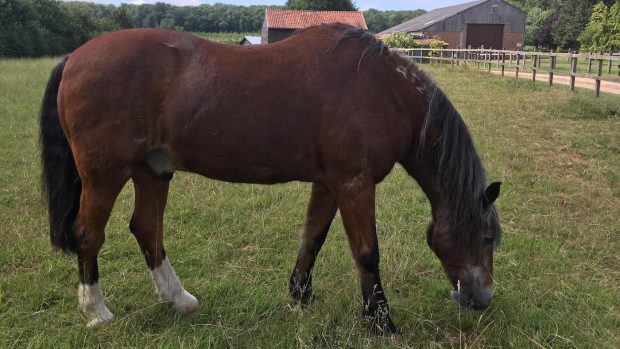The moment you start researching feed balancers or any kind of nutritional supplement, it becomes apparent that the market is flooded with choices. The good news is that there is something for every type of horse, but it also means that choosing the right balancer for your horse is infinitely more complicated. H&H has asked equine nutritionists to shed some light on the different types of balancers and help owners make the most informed decisions.
First of all, the horse owner needs to understand what a balancer is and ascertain what they want it to do. Kate Hore, RNutr (Animal), registered nutritionist with NAF, explains: “Firstly, when it comes to purpose there are two key areas, and that is those designed for competition horses and those working hard; and those aimed more at the light work and, or, good doer market.”
She goes on to raise other considerations, like the amount of pellets being fed: “Your second choice is whether to feed the typical 500g per day, or feed the more concentrated form at around 100g daily for a 500kg horse. The advantage of the more concentrated is the ease of feeding, plus they tend to be price competitive. Largely, the costs you’re saving include those that don’t impact on the efficacy of the product itself – i.e. the cost of transporting 15kg compared to less than 4kg, and the associated saving in packaging with the concentrated form. Not only does the concentrated form save on transport costs, but also emissions associated with transport, making them the ‘eco’ choice too.”
Needless to say, it’s also cheaper for the owner. A 20kg bag of balancer will go a lot further than a 20kg bag of mix or cube feed, which needs to be fed in greater amounts. For example, Spillers daily balancer costs £18.99 for a 15kg bag. That comes out of £0.63 per day for a 500kg horse.
According to Clare Barfoot, RNutr, marketing, research, and development director for Spillers, there are multiple categories of balancers for different types of horses.
The first, she says, are “light balancers, ideal to support weight loss and should be high in amino acids, including extra lysine, methionine and threonine to help support lean muscle and topline. Other ingredients like cinnamon, FOS and magnesium may also helpful to support weight loss and a healthy metabolism.”
These can be fed in small amounts and don’t contain cereals or extra fat, so they are an ideal way to get more minerals, vitamins, and amino acids into horses prone to weight gain.
Elucidating this point further, Katie Grimwood, BSc (Hons), nutrition advisor for Baileys, says: “Starch levels in most balancers are typically lower than 10%, and the amount of balancer you feed (typically 100g per 100kg bodyweight) is so low that, whatever the percentage starch content, the actual amount of starch your horse receives from his daily balancer is negligible.”
You can also get essential daily balancers and senior balancers. Barfoot explains: “Essential daily balancers are designed to balance the nutrients typically low in hay, haylage or pasture. Ideally it won’t have added iron, which is often over-supplied in forage-based diets.
“Senior balancers are usually designed to support digestion, comfort and movement in older horses. High levels of antioxidants will help immune health and probiotics and prebiotics will help support digestive health. Glucosamine is another important ingredient to support joint health. MSM and Omega 3 are also useful additions to look out for.”
You can also get products called stud balancers, aimed at pregnant mares or youngstock. Barfoot explains that these “are usually fed at slightly higher levels than other balancers due to the higher protein and lysine requirements of pregnant and lactating mares and growing youngstock. Despite this, stud balancers still provide significantly fewer calories than the recommended ration of compound feed so are ideal for good doing breeds and those foaling when spring grass is at its peak growth stage.”
Grimwood elaborates that stud balancers help young horses because: “Growing youngstock need the nutrients, supplied by a balancer, to build and grow tendon, muscle, bone and other tissues. Calorie intake can affect growth rates, and the beauty of feeding a balancer is that calorie levels can be regulated to maintain steady, even growth rates, whilst the balancer continues to provide essential nutrition.”
Regarding choosing a balancer for the performance horse, she says: “His requirements for quality protein and some other nutrients will be correspondingly higher than for a horse who is resting or in light work. You should therefore look for a balancer which is formulated to meet the needs of a performance horse and which is likely to contain higher levels of protein, for example, for muscle development and tissue repair, as well as key antioxidants like vitamin E and selenium.”
However, balancers aren’t the panacea for everything. Grimwood cautions that while some balancers might have added ingredients, or “nutraceuticals,” for joint health, owners of older horses or ones who need joint support might get more efficacy from a joint supplement: “These [nutraceutical ingredients in balancers] can be useful but, if your horse has a real problem or his lifestyle is demanding on his joints, then a more targeted alternative would be to feed a specific joint supplement, in addition to your balancer or hard feed, as this may allow you to feed higher levels of a wider range of nutraceutical ingredients to, hopefully, greater benefit.”
You might also be interested in:

Feed balancers: what’s on the market?

What is a feed balancer? H&H explains…

Should I feed my competition horse a balancer?

Can feeding a balancer help a horse on box rest?

Subscribe to Horse & Hound magazine today – and enjoy unlimited website access all year round
Horse & Hound magazine, out every Thursday, is packed with all the latest news and reports, as well as interviews, specials, nostalgia, vet and training advice. Find how you can enjoy the magazine delivered to your door every week, plus options to upgrade your subscription to access our online service that brings you breaking news and reports as well as other benefits.




